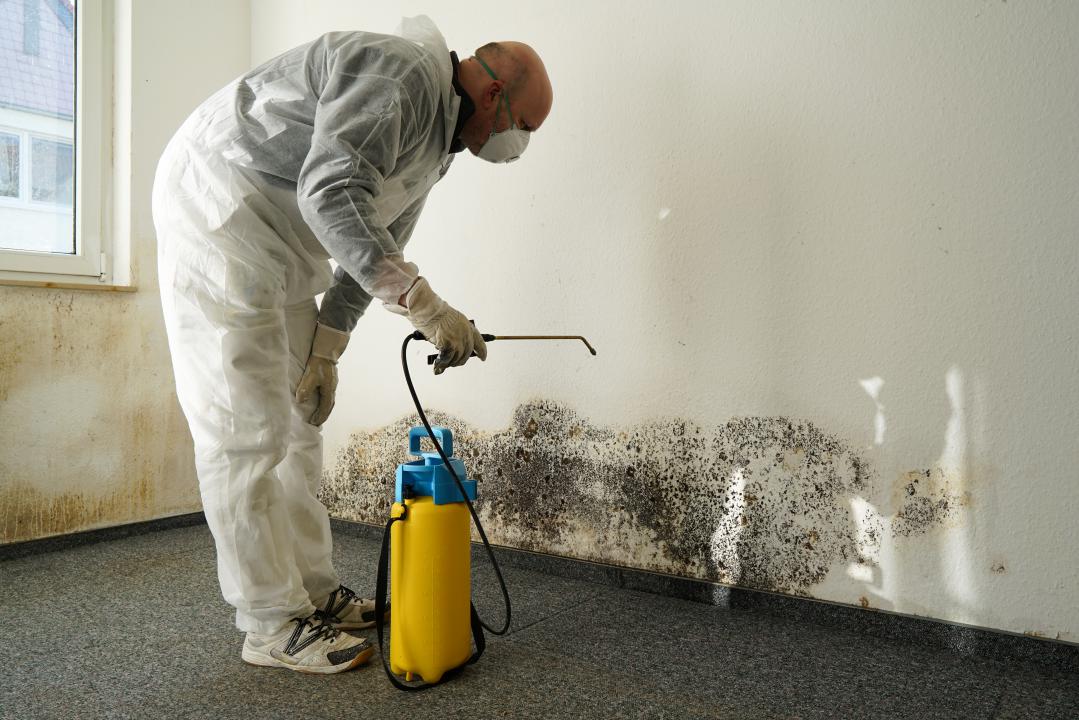
The Essential Guide to Mold Remediation Services: Protecting Your Home and Health
Key Takeaways:
- Mold can cause significant damage to your home and have a detrimental impact on your health.
- Exposure to mold can lead to respiratory issues, allergies, asthma attacks, and more severe health problems.
- Recognizing signs of mold growth, such as musty odors and discoloration, is essential for early detection and prevention.
- Professional mold testing helps identify the types of mold present, their concentration levels, and potential health risks.
- Professional mold remediation is more effective than DIY removal in addressing underlying issues and preventing future mold growth.
- Choose a certified and experienced mold remediation company that offers transparent communication and a detailed plan of action.
- The mold remediation process includes containment, removal of affected materials, thorough cleaning and treatment, and post-remediation assessment.
- Preparing your home, tackling mold in problem areas, and implementing effective prevention strategies support successful mold remediation.
- Proper ventilation, humidity control, and addressing water damage and leaks are crucial for maintaining a mold-free environment.
- Regular cleaning and maintenance, including inspecting and cleaning HVAC systems and gutters, help prevent mold growth.
Understanding the Dangers of Mold
Mold is a common issue that many homeowners face, but its potential dangers should not be underestimated. Not only can mold cause significant damage to your home, but it can also have a detrimental impact on your health. Understanding the dangers of mold is crucial in order to protect yourself and your loved ones.
The Hidden Threat: How Mold Can Affect Your Health
Mold releases tiny spores into the air, which can be easily inhaled when present in high concentrations. These spores can irritate the respiratory system and cause a range of health problems, especially for individuals with existing respiratory conditions or weakened immune systems.
Exposure to mold can lead to symptoms such as coughing, wheezing, sneezing, itchy eyes, and skin rashes. In some cases, mold exposure can trigger more severe reactions, including asthma attacks and allergic reactions. Prolonged exposure to certain types of mold, such as black mold, can even result in more serious health issues, such as respiratory infections and neurological problems.
It’s important to note that individuals may react differently to mold exposure, with some being more sensitive than others. However, regardless of your sensitivity, it’s crucial to take mold growth seriously and address it promptly to minimize the risk to your health.
Why Prevention is Key: Recognizing the Signs of Mold Growth
Preventing mold growth should be a top priority for every homeowner. While mold can sometimes go unnoticed, there are several signs that indicate its presence. Recognizing these signs is essential for early detection and prevention of further mold growth.
One of the most common signs of mold growth is a musty odor. If you notice a persistent, earthy smell in your home, it could be an indication of mold hidden in your walls, ceilings, or other hidden areas. Discoloration on walls, ceilings, and other surfaces is another telltale sign of mold. These patches may appear green, black, or even white, depending on the type of mold present.
In addition to visual and olfactory cues, experiencing unexplained health symptoms, such as respiratory issues or allergy-like symptoms, can also indicate the presence of mold in your home. If you or your family members are consistently experiencing health problems that improve when you leave your home, it’s important to consider the possibility of mold as the underlying cause.
By being vigilant and proactive in recognizing these signs, you can take the necessary steps to prevent further mold growth and protect your home and health.

The Importance of Professional Mold Testing
While some mold growth may be visible, it’s often necessary to conduct professional mold testing to assess the full extent of the problem. Professional mold testing involves collecting samples from various areas of your home and sending them to a laboratory for analysis.
This testing not only helps to identify the types of mold present but also determines the concentration levels and potential health risks. Professional mold testing is especially crucial when dealing with suspected toxic mold, such as black mold, as their presence requires specialized remediation methods.
Furthermore, professional mold testing provides documentation that can be used for insurance claims or future reference. It provides a comprehensive assessment of the mold situation in your home, helping you make informed decisions about remediation and ensuring the health and safety of your household.
Choosing the Right Mold Remediation Services
When faced with a mold infestation, it’s vital to choose the right mold remediation services to ensure effective treatment and prevention of future mold growth. While do-it-yourself (DIY) removal may seem like a cost-effective option, professional mold remediation offers numerous advantages that shouldn’t be overlooked.
Comparing DIY vs. Professional Mold Removal
DIY mold removal may appear appealing due to its lower upfront costs, but it often fails to address the underlying issues and prevent future mold growth. Without proper training and equipment, DIY attempts at mold removal can be ineffective and even exacerbate the problem.
Professional mold remediation, on the other hand, utilizes industry-standard practices and equipment to ensure thorough mold removal. Professionals have the knowledge and expertise to identify the root causes of mold growth, such as moisture problems or structural issues, and address them effectively.
Furthermore, professional mold remediation companies employ trained technicians who understand the proper handling of hazardous materials, such as toxic mold. They follow strict safety protocols to protect themselves and your home during the remediation process.
While DIY mold removal may seem tempting, investing in professional mold remediation services provides a long-term solution, ultimately saving you time, money, and future headaches.
The Qualities of a Reliable Mold Remediation Company
Choosing the right mold remediation company is essential for a successful remediation process. When selecting a company, there are several qualities you should look for to ensure their reliability and expertise.
First and foremost, the company should be certified and licensed. Mold remediation requires specific training and knowledge to be conducted safely and effectively. Look for certifications and memberships with recognized organizations, such as the Institute of Inspection, Cleaning and Restoration Certification (IICRC) or the National Organization of Remediators and Mold Inspectors (NORMI).
Experience is another critical factor to consider. A reputable mold remediation company should have a proven track record of successfully handling mold infestations in a variety of settings. Reading customer reviews and testimonials can provide valuable insights into the company’s past performance and customer satisfaction.
Lastly, transparency and clear communication are key. The company should be able to provide a detailed plan of action, including the steps involved in remediation, estimated timelines, and costs. They should also be responsive to your questions and concerns throughout the process.
By selecting a mold remediation company with these qualities, you can have confidence in their ability to handle your mold problem with professionalism and expertise.
Understanding the Mold Remediation Process
The mold remediation process involves several steps to ensure the complete removal and prevention of mold growth. Understanding these steps can help you better navigate the remediation process and know what to expect.
The first step is containment. Mold remediation professionals will set up containment barriers and negative air machines to prevent the spread of mold spores during the removal process. This helps protect unaffected areas of your home and minimize the risk of cross-contamination.
Next, the mold-infested materials are removed. This may involve cutting out and discarding drywall, carpeting, or other porous materials that have been extensively damaged by mold. Non-porous surfaces can often be cleaned and disinfected, depending on the severity of the contamination.
Once the affected materials are removed, the area is thoroughly cleaned and treated. Specialized cleaning agents and techniques are used to eliminate any remaining mold spores. Professional remediation companies may also employ air filtration devices to further purify the air and improve indoor air quality.
After the cleaning process, the area is dried and dehumidified to eliminate any remaining moisture that may contribute to future mold growth. If the root cause of the mold infestation, such as a leak or moisture issue, has been identified, steps will be taken to address and resolve it.
Lastly, a post-remediation assessment is conducted to ensure the effectiveness of the remediation process. This may involve air sampling and testing to confirm that the mold spore levels have returned to normal. The results of this assessment provide reassurance that the mold problem has been successfully remediated.
Tips for Successful Mold Remediation
While professional mold remediation is essential for effectively addressing mold infestations, there are steps you can take to support the process and achieve successful results.
Preparing Your Home for Mold Remediation
Before the mold remediation team arrives, it’s important to prepare your home to facilitate a smooth and efficient process. Clear the affected areas of any personal belongings and furniture. This not only allows the technicians to access the mold-infested areas easily but also protects your belongings from potential damage or contamination.
Additionally, ensure that all residents and pets are out of the home during the remediation process. This minimizes the risk of exposure to mold spores and any cleaning agents or chemicals used during the process. Coordinate with the remediation company to schedule the appropriate time for the work to be carried out.
Lastly, communicate any specific concerns or questions you have with the remediation team. They are there to address your concerns and provide guidance throughout the process.
Tackling Mold Infestations in Common Problem Areas
Some areas of your home are more prone to mold growth than others. Knowing these problem areas and taking proactive measures can help prevent mold infestations.
Bathrooms and kitchens are particularly susceptible to mold growth due to their high humidity levels. Ensuring proper ventilation, such as using exhaust fans, can help reduce moisture and prevent mold from thriving in these areas. Regularly inspecting and maintaining plumbing fixtures and pipes can also prevent leaks and water damage that may lead to mold growth.
Basements and crawl spaces are another common hotspot for mold growth. These areas tend to have poor ventilation and higher moisture levels, creating an ideal environment for mold to flourish. Installing dehumidifiers and sealing any cracks or gaps in the foundation can help reduce moisture and minimize the risk of mold growth.
By being proactive in these problem areas, you can significantly decrease the likelihood of mold infestations in your home.
Effective Strategies for Mold Prevention
While remediation is necessary to address existing mold problems, prevention is always better than cure. Implementing effective strategies for mold prevention can help you maintain a mold-free environment and protect your home and health in the long run.
Controlling moisture is the key to mold prevention. Regularly inspect your home for any leaks, water damage, or high humidity areas. Address these issues promptly to prevent mold growth. Using dehumidifiers, especially in basements and other damp areas, can help reduce moisture levels and discourage mold growth.
Proper ventilation is another crucial aspect of mold prevention. Ensure that your home is adequately ventilated, especially in areas prone to moisture accumulation. This includes using exhaust fans in bathrooms and kitchens, opening windows to improve airflow, and avoiding the use of humidifiers excessively.
Regular cleaning and maintenance also play a significant role in mold prevention. Routinely clean and inspect areas that are prone to moisture, such as shower curtains, air conditioning units, and window sills. Keep these areas dry, and address any signs of mold growth promptly.
By implementing these preventive measures, you can significantly reduce the risk of mold growth in your home and maintain a healthier living environment.
Maintaining a Mold-Free Environment
Even after successfully remediating a mold infestation, it’s important to maintain a mold-free environment to prevent future growth and protect your home and health.
The Role of Proper Ventilation and Humidity Control
Proper ventilation and humidity control continue to play a significant role in maintaining a mold-free environment. Ensure that your home is adequately ventilated, especially in high-moisture areas such as bathrooms and kitchens. Exhaust fans, dehumidifiers, and proper airflow can help prevent excessive moisture buildup that can lead to mold growth.
Regularly monitor humidity levels in your home and maintain them below 50%. This can be easily achieved with the use of dehumidifiers, particularly in basements and other damp areas. Regularly inspect and clean HVAC systems to ensure proper functioning and airflow.
By effectively managing ventilation and humidity, you can create an environment that is less conducive to mold growth, reducing the risk of future infestations.
Keeping Your Home Dry: Handling Water Damage and Leaks
Water damage and leaks are prime contributors to mold growth. Promptly addressing any signs of water damage or leaks is crucial in maintaining a mold-free environment. Regularly inspect your home for any roof leaks, plumbing leaks, or malfunctioning appliances that may be causing water damage.
If you do identify any leaks or water damage, take immediate action to repair and remediate the issue. This may involve fixing the plumbing, replacing damaged materials, or contacting a professional for assistance. The quicker you address water-related issues, the less likely mold will have an opportunity to grow and spread.
Additionally, consider investing in water leak detection systems or smart home devices that can alert you to potential leaks or moisture buildup, providing an early warning system for potential mold problems.
Regular Cleaning and Maintenance to Prevent Mold Growth
Maintaining a regular cleaning and maintenance routine is vital for mold prevention. Routinely clean and inspect areas prone to moisture, such as bathrooms, kitchens, and basements. Use appropriate cleaning agents and techniques to remove any dirt, grime, or mold spores that may be present.
Pay attention to areas that may be overlooked, such as air conditioning units, vents, and ductwork. Properly maintaining these systems ensures optimal airflow and prevents the accumulation of moisture, reducing the risk of mold growth.
Regularly inspect and clean your home’s gutters and downspouts to ensure proper drainage. Clogged or faulty gutters can cause water to accumulate around your home’s foundation, creating a damp environment that encourages mold growth.
By incorporating regular cleaning and maintenance tasks into your routine, you can proactively prevent mold growth and maintain a healthier living environment.
By following the tips and guidelines outlined in this comprehensive guide, you can protect your home and health from the dangers of mold. Understanding the potential risks, choosing the right mold remediation services, and implementing preventive measures will help you create a mold-free environment and enjoy peace of mind knowing that your home is safe and healthy.
FAQ
Question: What are the dangers of mold? Answer: Mold can cause significant damage to your home and have a detrimental impact on your health. Exposure to mold can lead to respiratory issues, allergies, asthma attacks, and more severe health problems.
Question: How can I recognize signs of mold growth? Answer: Signs of mold growth include musty odors and discoloration on walls, ceilings, and other surfaces. Experiencing unexplained health symptoms, such as respiratory issues or allergy-like symptoms, can also indicate the presence of mold in your home.
Question: Why is professional mold testing important? Answer: Professional mold testing helps identify the types of mold present, their concentration levels, and potential health risks. It provides a comprehensive assessment of the mold situation in your home, helping you make informed decisions about remediation and ensuring the health and safety of your household.
Question: What are the advantages of professional mold remediation over DIY removal? Answer: Professional mold remediation is more effective than DIY removal in addressing underlying issues and preventing future mold growth. Professionals have the knowledge and expertise to properly handle hazardous materials, follow safety protocols, and identify root causes of mold growth.
Question: What qualities should I look for in a mold remediation company? Answer: When selecting a mold remediation company, look for certifications, licenses, and experience. Choose a company that offers transparent communication, a detailed plan of action, and has a proven track record of successfully handling mold infestations.
Question: What does the mold remediation process entail? Answer: The mold remediation process includes containment, removal of affected materials, thorough cleaning and treatment, and post-remediation assessment. Containment and proper cleaning techniques are employed to prevent the spread of mold spores and ensure complete removal.
Question: How can I prepare my home for mold remediation? Answer: Before the mold remediation team arrives, clear the affected areas of personal belongings and ensure all residents and pets are out of the home. Communicate any specific concerns or questions you have with the remediation team.
Question: What can I do to maintain a mold-free environment after remediation? Answer: Proper ventilation, humidity control, addressing water damage and leaks, regular cleaning and maintenance, and implementing effective prevention strategies are crucial for maintaining a mold-free environment. These measures reduce moisture levels, improve airflow, and prevent future mold growth.
Useful Resources:
- https://www.epa.gov/
- https://www.cdc.gov/
- https://www.aiha.org/
- https://www.niehs.nih.gov/
- https://www.iicrc.org/
- https://www.normi.org/
- https://www.nih.gov/
- https://www.osha.gov/





















